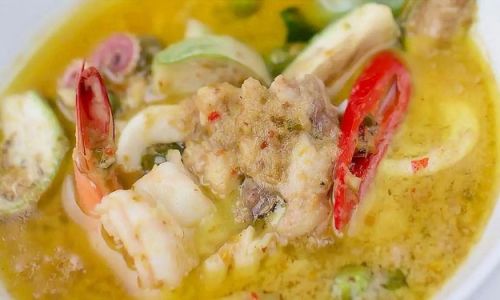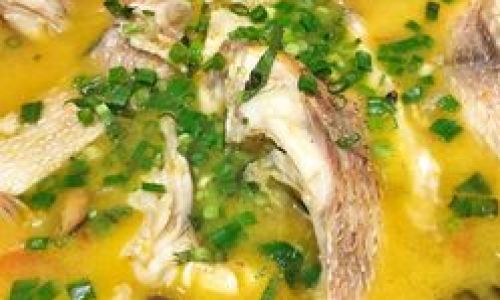The culinary world thrives on innovation, and one of the most intriguing fusions to emerge in recent years is the pairing of fish with passion fruit. This unlikely combination merges the delicate, buttery texture of fish with the tangy, aromatic sweetness of passion fruit, creating a dish that is both refreshing and deeply satisfying. Originating from tropical regions where passion fruit grows abundantly, this recipe has transcended borders, becoming a favorite among home cooks and professional chefs alike. In this article, we will explore the history, techniques, and creative possibilities of cooking fish with passion fruit, offering a step-by-step guide to help you recreate this vibrant dish in your own kitchen.
The Origins of Passion Fruit in Cuisine
Passion fruit (Passiflora edulis) is native to South America, with a history dating back centuries. Indigenous communities in Brazil, Peru, and Paraguay first cultivated the fruit for its medicinal and culinary uses. The name “passion fruit” is derived from the flower’s resemblance to the crown of thorns worn by Jesus during the Passion, a symbolism embraced by Spanish missionaries who encountered the plant during colonization. Today, passion fruit is grown in tropical and subtropical regions worldwide, including Australia, Africa, and Southeast Asia, and is prized for its unique flavor profile—a balance of sweetness and acidity, with floral and citrusy undertones.
In culinary applications, passion fruit is incredibly versatile. Its juice and pulp are used in desserts, beverages, sauces, and marinades. The fruit’s high acidity makes it an excellent tenderizing agent for meats, while its natural sweetness complements seafood, particularly fish. The combination of fish and passion fruit is a testament to the harmony of contrasting flavors—the fish’s mildness is elevated by the fruit’s vibrancy, resulting in a dish that is both light and bold.
Selecting the Right Fish
The key to a successful passion fruit-infused fish dish lies in selecting the right type of fish. Opt for white-fleshed, mild-flavored varieties that can withstand the fruit’s acidity without becoming overpowered. Popular choices include:
- Tilapia: A firm, slightly sweet fish that absorbs flavors well.
- Sea Bass: Known for its buttery texture and delicate taste.
- Snapper: A versatile fish with a subtle sweetness.
- Cod: Flaky and mild, perfect for absorbing citrusy notes.
- Salmon: For a richer option, though its bold flavor pairs best with a balanced passion fruit glaze.
When purchasing fish, ensure it is fresh—look for clear eyes, shiny skin, and a mild oceanic scent. If using frozen fish, thaw it slowly in the refrigerator to preserve texture.

Preparing the Passion Fruit
Passion fruit is available in two primary varieties: purple and yellow. The purple variety is smaller, with a tart, intense flavor, while the yellow passion fruit (also known as golden passion fruit) is larger and slightly sweeter. Both work well in this recipe, though the purple variety’s acidity may require a touch of honey or sugar to balance the dish.
To prepare passion fruit:
- Cut the fruit in half using a sharp knife.
- Scoop out the pulp (including the seeds) using a spoon.
- Strain the juice if a smoother sauce is desired, though the seeds add a pleasant crunch.
For a concentrated flavor, reduce the passion fruit juice by simmering it over low heat until it thickens slightly. This step deepens the fruit’s acidity and sweetness, creating a richer glaze.
The Cooking Process: Step-by-Step
Method 1: Baking with Passion Fruit Glaze
Baking is an ideal technique for cooking fish with passion fruit, as it allows the flavors to meld without overpowering the fish’s delicate texture.

Ingredients (serves 4):
- 4 fish fillets (6 oz each)
- 4 passion fruits (pulp and juice)
- 2 tbsp olive oil
- 1 tbsp honey or agave syrup (adjust to taste)
- 2 garlic cloves, minced
- 1 tbsp fresh ginger, grated
- 1 red chili, thinly sliced (optional)
- 1 lime, juiced
- Salt and pepper to taste
- Fresh cilantro or basil for garnish
Instructions:
- Marinate the fish: In a bowl, combine passion fruit pulp, olive oil, honey, garlic, ginger, chili (if using), lime juice, salt, and pepper. Place the fish fillets in a shallow dish and pour the marinade over them. Cover and refrigerate for 30 minutes.
- Preheat the oven: Set to 375°F (190°C).
- Bake the fish: Transfer the fillets to a baking dish lined with parchment paper. Spoon the remaining marinade over the fish. Bake for 12–15 minutes, or until the fish flakes easily with a fork.
- Garnish and serve: Drizzle with additional passion fruit juice, sprinkle with herbs, and serve with coconut rice or grilled vegetables.
Method 2: Poaching in Passion Fruit Broth
Poaching is a gentle cooking method that infuses the fish with the fruit’s essence while keeping it moist.
Ingredients (serves 4):

- 4 fish fillets
- 6 passion fruits (pulp and juice)
- 1 cup fish or vegetable stock
- 1 shallot, thinly sliced
- 1 lemongrass stalk, bruised
- 1 kaffir lime leaf (optional)
- 1 tbsp coconut oil
- Salt and pepper to taste
- Fresh mint leaves for garnish
Instructions:
- Prepare the broth: In a saucepan, heat coconut oil over medium heat. Sauté shallots until translucent. Add passion fruit pulp, stock, lemongrass, and lime leaf. Simmer for 10 minutes.
- Poach the fish: Reduce heat to low. Gently slide the fish fillets into the broth. Cook for 6–8 minutes, or until opaque.
- Serve: Remove the fish and lemongrass from the broth. Spoon the broth over the fish, garnish with mint, and pair with steamed jasmine rice.
Enhancing the Dish: Flavor Pairings and Presentation
The beauty of cooking with passion fruit lies in its adaptability. Here are creative ways to elevate your dish:
- Spice it up: Add a pinch of chili flakes or a sliced Scotch bonnet pepper for heat.
- Creamy texture: Swirl a tablespoon of coconut cream into the broth or glaze for richness.
- Citrus zest: Grate lime or lemon zest over the finished dish for aromatic complexity.
- Herbal notes: Pair with cilantro, basil, or dill to enhance freshness.
For presentation, serve the fish on a bed of vibrant greens, such as spinach or watercress, and surround it with passion fruit halves or wedges. A drizzle of reduced balsamic glaze or a sprinkle of toasted coconut adds a finishing touch of elegance.
Health Benefits of Passion Fruit and Fish
This dish is not only a feast for the senses but also a nutritional powerhouse. Fish, particularly fatty varieties like salmon, is rich in omega-3 fatty acids, which support heart and brain health. Passion fruit is packed with vitamins A and C, fiber, and antioxidants like beta-carotene, which boost immunity and promote skin health. The combination creates a low-calorie, high-protein meal that aligns with balanced diets, including Mediterranean and Paleo lifestyles.

Cultural Variations and Modern Twists
The fusion of fish and passion fruit has inspired chefs globally to experiment with regional twists:
- Caribbean-Style: Add allspice, thyme, and a splash of rum to the marinade.
- Southeast Asian: Incorporate lemongrass, galangal, and fish sauce for an umami-rich broth.
- Mexican-Inspired: Serve the fish in tacos with mango salsa and a squeeze of lime.
For a vegan twist, substitute the fish with marinated tofu or tempeh, following the same cooking method.
Troubleshooting Common Issues
- Overly tart sauce: Balance with honey, agave, or a pinch of brown sugar.
- Fish sticking to the pan: Ensure the cooking surface is well-oiled and the fish is patted dry before cooking.
- Mushy texture: Avoid overcooking; remove the fish from heat as soon as it flakes easily.
Conclusion: A Culinary Adventure Awaits
Cooking fish with passion fruit is a celebration of contrasts—sweet and tart, tender and vibrant. This dish bridges cultures and seasons, offering a taste of the tropics while honoring the fish’s natural flavors. Whether baked, poached, or grilled, the marriage of fish and passion fruit invites creativity, making it a perfect centerpiece for dinner parties or a weeknight indulgence. So, embrace the exotic, and let your kitchen become a gateway to culinary discovery. Bon appétit!






0 comments